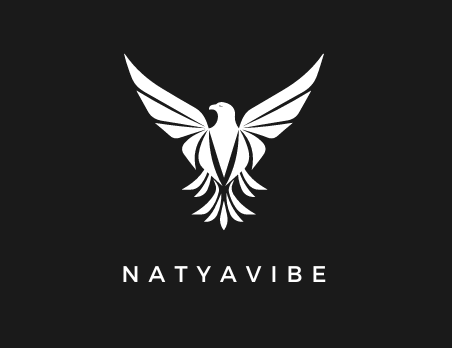Table of Contents
Imagine watching a Bharatanatyam performance for the very first time. The dancer’s rhythmic steps, graceful movements, and the beautiful music create a magical experience. It all looks so smooth and effortless. But did you know there’s a strong framework guiding this art? It’s called Tala.
So, what is Tala, and why is it important in Bharatanatyam? Tala is like the heartbeat of the dance. It’s a pattern of beats that sets the rhythm for the dancer and the musicians. Without Tala, the performance would lose its flow and coordination.
Think of Tala as a timer that keeps everyone in sync—the dancer’s steps, hand movements, and even the expressions all align with it. It’s what makes Bharatanatyam not just a dance but a perfect blend of rhythm, grace, and storytelling.

this image source from google
The Heartbeat of Bharatanatyam: What is Tala?
Tala, in its simplest form, is the rhythmic cycle or time measure that governs both the music and the movements in Bharatanatyam. The word “Tala” comes from Sanskrit, where “Ta” means hand and “La” means clapping, symbolizing rhythm. Just like how the heartbeat keeps our body alive, Tala keeps the dance alive by ensuring the synchronization between the dancer’s movements and the music. Without Tala, the performance would lose its structure and essence, and the beautiful flow of the dance would be disrupted. It is the backbone of every Bharatanatyam performance, making sure everything fits together perfectly.
Why is Tala Important?
To truly understand what Tala is, think of it as the scaffolding of a building. While the intricate carvings and decorations catch your eye, it’s the scaffolding that holds everything together. Similarly, in Bharatanatyam, Tala provides:
- Rhythmic Framework: Tala gives the dance a strong, steady rhythm to follow, ensuring that each movement is in harmony with the music and doesn’t lose its rhythm.
- Coordination and Precision: Just like scaffolding supports workers in the right position, Tala helps the dancer maintain precise coordination between their movements and the accompanying music, making the performance smooth and flawless.
- Structure and Balance: Tala creates a balanced structure for the dance, allowing the dancer to flow from one movement to another in a rhythmic sequence, maintaining a sense of continuity and order.
- Emotional Expression: While the visual beauty of Bharatanatyam captivates you, the rhythm guided by Tala enhances the emotional depth of the dance, helping the dancer express feelings through movement in perfect timing with the music.
- Unity between Music and Dance: Tala ensures that both the music and the dancer’s movements work together seamlessly, creating a unified, captivating performance.
Without Tala, the performance would lack rhythm, coordination, and harmony, leaving the beauty of the dance incomplete.
The Anatomy of Tala
Breaking down Tala helps us appreciate its depth and complexity. Here are its key components:
1. Angas (Parts)
Tala consists of distinct sections called Angas, such as Laghu (beats with finger counts), Dhrutam (a clap and a wave), and Anudhrutam (a single clap). These Angas combine in varying patterns to form different Talas.
2. Kriyas (Actions)
Kriyas refer to the physical actions like clapping, waving, or finger movements that mark the beats within a Tala. These are not merely gestures but precise actions that the dancer synchronizes with the music.
3. Common Talas in Bharatanatyam
- Adi Tala: An 8-beat cycle, perhaps the most popular Tala in Bharatanatyam.
- Rupaka Tala: A 6-beat cycle known for its elegant simplicity.
- Misra Chapu Tala: A 7-beat cycle that challenges the dancer’s rhythmic skills
Tala and the Dancer: A Symbiotic Relationship
Understanding Tala is like learning a new language. At first, it may feel like just memorizing patterns and practicing rhythmic sequences. But once mastered, Tala becomes an extension of the dancer’s body, deeply embedded in their movements.
Picture a dancer performing an intricate Jathi (rhythmic sequence). The beats of Tala guide every step they take, from their precise footwork to the expressions on their face, even the subtle movements of their eyes. It’s a perfect dance of collaboration, where Tala leads with its rhythmic structure, and the dancer follows with grace, precision, and an innate understanding of the rhythm. As the dancer immerses themselves in the rhythm, their body flows seamlessly with the Tala, making the dance feel effortless and alive. It’s a beautiful partnership where rhythm and movement unite in perfect harmony.
Making Tala Relatable: A Simple Analogy
If you’ve ever tapped your foot to your favorite song, you’ve already experienced the essence of Tala. Think of your foot tapping as the steady beats of a drum. Now, imagine adding a melody and lyrics on top of those beats. This mix of rhythm and tune is what Tala does in Bharatanatyam.
Tala acts like an invisible thread that connects everything—the dancer’s movements, expressions, and the music—together. It helps tell the story through rhythm, guiding the dancer’s actions and creating harmony between music and movement.
Embracing Tala in Your Bharatanatyam Journey
For anyone wanting to learn Bharatanatyam, understanding Tala is a must. Begin by practicing basic Talas, such as Adi Tala, which is a simple yet fundamental rhythm. To stay on track, use tools like a metronome or a Tala machine to help you keep a steady beat. As you continue practicing, you’ll start to move more naturally to even more complex Talas, which will improve both your skill and confidence as a dancer. The more you practice, the easier it will be to feel the rhythm and let it guide your dance.
Conclusion
What is Tala? It’s the heartbeat of Bharatanatyam, the invisible guide that shapes every movement and expression. As you watch or learn Bharatanatyam, try to feel the rhythm, the Tala, coursing through the performance. It’s more than just beats; it’s a celebration of discipline, artistry, and emotion. If you want to know more about Bharatnatyam you can visit NatyaVibes.
So, next time you attend a performance or practice a Jathi, ask yourself: Can you hear the Tala guiding you?

